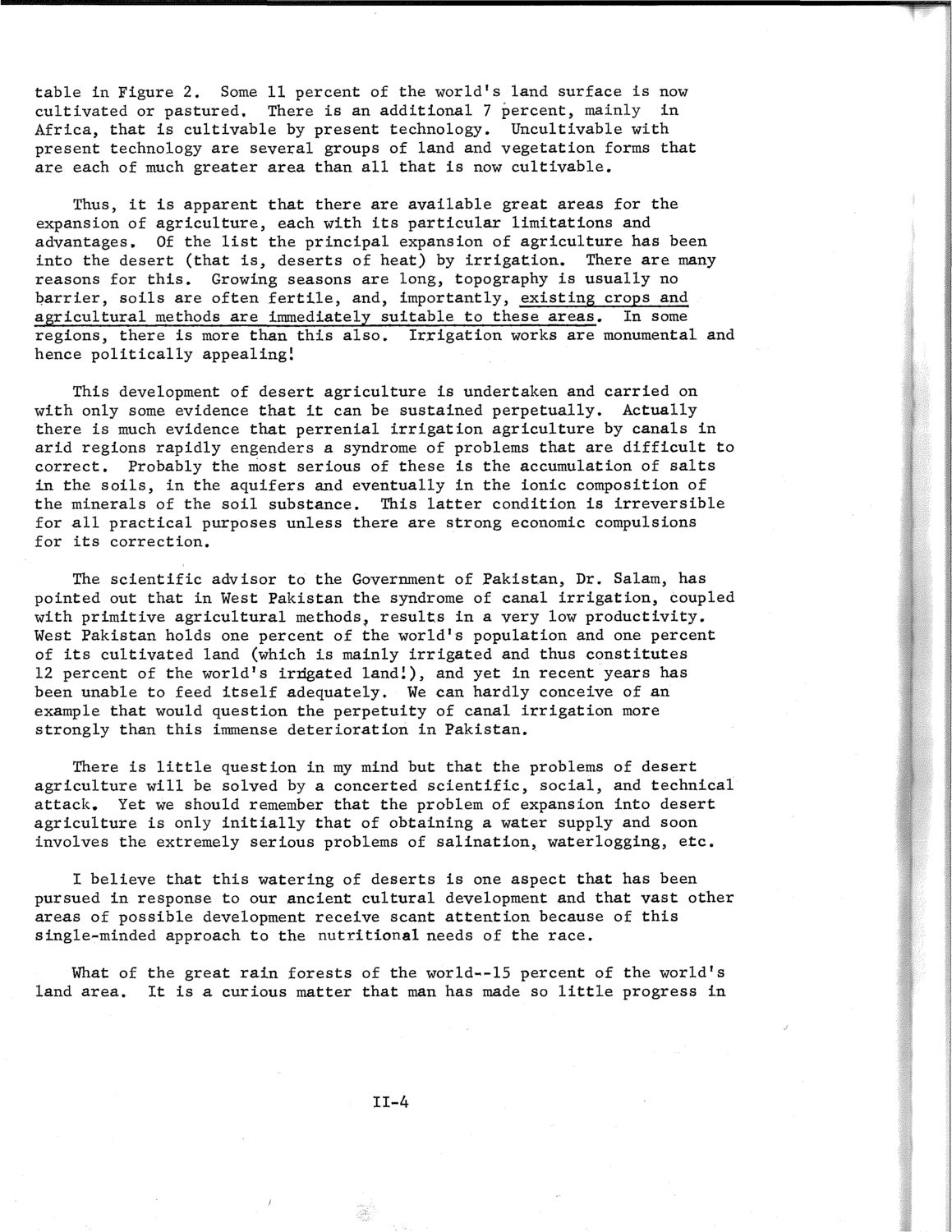| |
| |
Caption: SWE - Proceedings of the First International Conference of Women Engineers and Scientists
This is a reduced-resolution page image for fast online browsing.

EXTRACTED TEXT FROM PAGE:
table in Figure 2. Some 11 percent of the world's land surface is now cultivated or pastured. There is an additional 7 percent, mainly in Africa, that is cultivable by present technology. Uncultivable with present technology are several groups of land and vegetation forms that are each of much greater area than all that is now cultivable. Thus, it is apparent that there are available great areas for the expansion of agriculture, each with its particular limitations and advantages. Of the list the principal expansion of agriculture has been into the desert (that is, deserts of heat) by irrigation. There are many reasons for this. Growing seasons are long, topography is usually no barrier, soils are often fertile, and, importantly, existing crops and agricultural methods are immediately suitable to these areas. In some regions, there is more than this also. Irrigation works are monumental and hence politically appealing! This development of desert agriculture is undertaken and carried on with only some evidence that it can be sustained perpetually. Actually there is much evidence that perrenial irrigation agriculture by canals in arid regions rapidly engenders a syndrome of problems that are difficult to correct. Probably the most serious of these is the accumulation of salts in the soils, in the aquifers and eventually in the ionic composition of the minerals of the soil substance. This latter condition is irreversible for all practical purposes unless there are strong economic compulsions for its correction. The scientific advisor to the Government of Pakistan, Dr. Salam, has pointed out that in West Pakistan the syndrome of canal irrigation, coupled with primitive agricultural methods, results in a very low productivity. West Pakistan holds one percent of the world's population and one percent of its cultivated land (which is mainly irrigated and thus constitutes 12 percent of the world's irrigated land!), and yet in recent years has been unable to feed itself adequately. We can hardly conceive of an example that would question the perpetuity of canal irrigation more strongly than this immense deterioration in Pakistan. There is little question in my mind but that the problems of desert agriculture will be solved by a concerted scientific, social, and technical attack. Yet we should remember that the problem of expansion into desert agriculture is only initially that of obtaining a water supply and soon involves the extremely serious problems of salination, waterlogging, etc. I believe that this watering of deserts is one aspect that has been pursued in response to our ancient cultural development and that vast other areas of possible development receive scant attention because of this single-minded approach to the nutritional needs of the race. What of the great rain forests of the world-<-15 percent of the world's land area. It is a curious matter that man has made so little progress in II-4
| |